Media | Articles
Piston Slap: Can We Even Call It Wax Anymore?
Hagerty Community Member DUB6 writes:
Sajeev, since it’s nearing the time of year that I traditionally apply a coat of “paste wax” to my classic, cover it and put it away for a winter nap, I wonder if you (and the Community) would help me understand what types of protection there is out in today’s world, and the pros and cons of each?
For instance, carnuba used to be a big buzzword, but these days I see ceramic a lot, so obviously things have progressed in that world. Are the wash/wax combination products viable, or just a scam?
Not really looking for specific brand name recommendations, but I realize that a lot of “car wax” isn’t even made of wax! What’s the scoop, sir?
Marketplace
Buy and sell classics with confidence
Sajeev answers:
This is a fantastic question, so sit down and enjoy the ride. The question about car wash/wax products is easy to answer: This combo works for vehicles that need basic care by owners with only a few minutes of spare time. But they generally have a low amount of protective “wax” in them, low enough for me to deem them unworthy of specialty vehicles owned by the Hagerty Community. Especially for DUB6’s delightful Pontiac GTO!

I heartily discourage car enthusiasts from using all-in-one car wash products; instead buy separate chemicals, and (generally) enjoy longer lasting shine and protection. Now to the main event: Decoding the sheer volume of wax products in a logical manner.
I had the pleasure interviewing the folks at Turtle Wax over 15 years ago, leading me to believe that waxes were just as marketing driven as potato chips. But times have changed, as we now have Doritos Dinamita Flamin’ Hot Queso chips (yes, really), but only three catch-all classifications for “wax” products. So let’s discuss this trinity of protective paint coatings in greater detail.
Waxing by Mother Nature

Traditional waxes are typically made out of carnauba wax, a naturally occurring product of the Copernicia prunifera tree. It is sourced (ethically, or perhaps not) from farmers in Brazil. As a finished product, it gives a deep, glossy shine that can even fill in small scratches. Wax lasts for weeks or months, and is quite labor intensive both on application and when buffing off. We’ve been using this stuff for decades and they are tragically antiquated, so let’s move on.
Sealing By Polymer

In stark contrast to carnauba, polymers aren’t waxes. They are a complicated concoction of science stuff (technical term) that creates a chemical sealer. It’s hard to know what’s exactly in these sealers, as most companies treat it as a proprietary blend on par with Coca-Cola’s secret recipe. But whatever they are, the end result is pretty fantastic.
Application and removal of polymer sealer is easy and it lasts for months, possibly even over a year (when indoors, speaking from experience). The shine isn’t quite as deep and glossy as carnauba, especially if the surface isn’t treated to a polish or clay bar beforehand.
Coating By Ceramics

Likely best explained as a “semi-permanent, non-metallic, inorganic protective clear coat” by these folks, ceramic coatings share more in common with the Corningware found in your kitchen than it does with wax from a carnauba tree. And much like those dishes, ceramic coatings are the most durable (lasting years, depending on vehicle storage) and provide a high shine. But they are the most expensive product, and generally lack the depth of gloss found in wax.
Adding to the expense is the need for polishing and paint correction to ensure the deepest and shiniest paint job after application of ceramic coating. Ceramics are harder to apply, in stark contrast to carnauba wax which easily fills in small imperfections and gives a deep glow to a paint job. Finally, ceramic coatings must be washed with the correct soap, and doing otherwise will significantly shorten its lifespan.
Consider The Spray-On Delivery Method?

The three classifications discussed are most commonly associated with a product you apply by hand and buff off. (Ceramic coatings technically have excess material you wipe away, if you want to split hairs.) But the same technologies are available in a spray wax, which makes things more convenient.
Ceramic spray waxes have a silicone infused (for lack of a better word) formulation that lasts for months, are generally easy to apply, and seem to be the most expensive. Polymer sprays are even easier to apply, last a couple of months, and are cheaper than ceramics. Carnauba sprays usually have the best shine/gloss, are very easy to apply, but only last a couple of weeks.
If you aren’t confused enough yet, consider that Turtle Wax has a hybrid lineup that marries the benefits of polymers and ceramics in a package more affordable than most pure ceramic options. Considering what a big deal hybrid powertrain vehicles are these days, maybe hybrid waxes are the best of all worlds?
Final Thoughts / What I Use
After speaking to the folks at Turtle Wax, it’s clear that carnauba is best for a show car that must pass muster with judges. Everyone else would likely benefit from either mid-priced polymer sealers or higher dollar ceramic coatings. The latter wasn’t popular when I met with Turtle Wax in 2009, but they have proven themselves across multiple industries. I’m just spitballing here, but consider ceramic coatings if you have an off-road vehicle, as it would clean up with a garden hose and very little else. For people in the middle of these use cases, consider polymer sealers.
Back to my recommendation: A paint correction shop near me swore by Duragloss Aquawax 952, and they let me try their stash of this polymer coating. I could not believe how easy it went on and off the car. It even acts like moisturizer to the dry, thin, single-stage paint job on the red Mercury Cougar pictured here, getting significantly glossier after three heavy coats. It works magic on glass and rubber seals, too. My gushing over this product might be indicative of many polymer coatings, but this is the best one I’ve seen for the dollar.

Speaking of value, I buy this polymer sealer by the gallon (about $55) and pour it into a spray bottle. It’s a great value, presumably because Duragloss spends very little money on advertising or product placement at retailers. I am happy with how long it lasts (3-12 months in my case) and it’s certainly nice to avoid dumping an empty, 16-fluid-ounce plastic bottle into the landfill twice a year.
As always, your mileage may vary. But now you know the three types of, ahem, waxes you have at your disposal. I have a feeling most folks need a polymer sealer, but we shall see what populates in the comments!


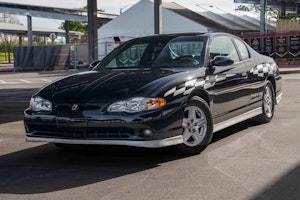
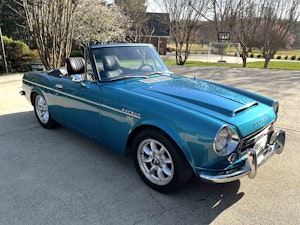

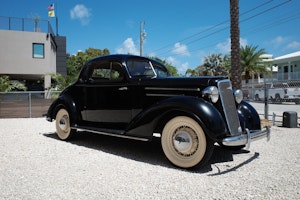
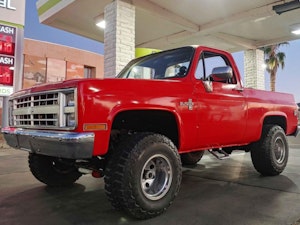

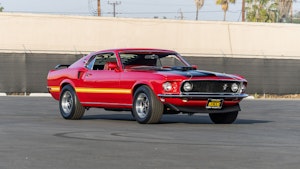









Back in the day my black 1959 Olds 98 got a coat of Blue Corral twice a year, just don’t get ahead of yourself!!
I’m sure that this comment section regarding this particular topic will get lots of opinions regarding specific brands of paint coatings. I’ll put a plug in for Croftgate, LLC. products of Hollywood, Florida. Their Wash & Wax is particularly impressive as it pulls dirt and grime even from a freshly hand washed surface. The polymer coating lasts for close to nine months or a year depending upon how the vehicle is used. Their Quick & Clean spray is a nice in between product to protect the surface. I recently had my 1985 Mustang GT ceramic coated after having many businesses tell me that a non-clear coated vehicle could not be a candidate for this service. A local detailer who uses System X products actually called the company’s head chemist before agreeing to do this car, and they came up with a solution…an additional prep prior to the coating. Wow! Now the paint the shiniest it’s ever been, but even more importantly, the paint is now protected. It wasn’t cheap…about $1,300 for the complete job, but now I don’t have to concern myself with keeping the original paint looking as good as it can.
Since we live out in the boonies and our well water, while safe (according to the health department), it is somewhat unaesthetic even after a trip through a water softener and a carbon filter, Dear Bride and I drink bottled water (more accurately, she drinks bottled water, I drink Diet Coke).
She had me put a case of bottled water into the hangar where we both forgot about it. Since it has now passed its expiration date (yeah, it has only been around for a couple of billion years and now it has an expiration date), she won’t drink it.
I now use bottled water to wash my Mercedes, which I guess makes me the ultimate Yuppie.
Only if it’s Perrier…
there is/was a sam’s club $6 car wash in the st. louis area that i ran my late wife’s car through every time while in the area (about 6-10 times a year for 4 years). the last time was about 11 years ago. the car still beads up, maybe not quite as good now. still don’t hafta use the wipers. i’m assuming that car wash used some type of polymer spray post wash.
Project Farm has consistently shown that Hybrid Solutions (Turtle Wax owned) ceramic is one of the best, especially for the price. I put it on my old Miata a couple of years ago. It’s only outside on nice days about 4 months a year. Water still beads like it was first applied. (Also, can’t seem to find Duragloss reasonable in Canada but do use polymers and would like to try it.)
My hot rod is satin black. End of story
Sajeev, the paint color of the vehicle also plays a part in WHICH “wax” product to use. Black or other dark colored paint? All the hard work will be on display- choose accordingly. White, or silver? Much less to show for all the effort of, for example, a classic carnauba wax.
Sajeev, the paint color of the vehicle also plays a part in WHICH “wax” product to use. Black or other dark colored paint? All the hard work will be on display- choose accordingly. White, or silver? Much less to show for all the effort of, for example, a classic carnauba wax.
Does anyone have information on how the Polymes work on old-school Nitrocellulous Lacquer?
Thank you!
In 93 I bought a brand-new Bronco. Burgundy and white. After 2 years the burgundy became chalky and dull looking. The white still looked new. (hmm?), Fast forward to 2003, I bought a new solid white Ranger Edge. 9 years of SW Florida sun, and then12 years in Virginia, (hot summers and cold winters) the white paint still looks new after a wash job. No clear coat peeling, no fading of any kind. In all those years I waxed it twice. If you want to have a shiny Ford, get a white one.
Mothers California Gold Synthetic Paste Wax (formerly Syn-Wax) is the best product I have ever used.
I found 1 place that had the 952 gallon and it is selling for $80.89, not sure where you got this stuff for $55 but why don’t you send us the information?
https://ibspot.com/products/duragloss-952-aquawax-1-gallon-black?variant_id=21142541&gad_source=4&gclid=Cj0KCQiAouG5BhDBARIsAOc08RQ7JjFZvY4r_fAwotdyo99b8Vub-km25PExAmI8VMpzd3vTg56plWoaAhDyEALw_wcB
Great article for novices like me. Thank you Sajeev!
F-11
I have a 2015 Camaro ZL1 and F11 is the only product that I’ve used on it since new, o/t conv top sealer (501). I have no complaints. Bugs, bird droppings, etc rinse right off.
I noticed the Aquawax spray bottle is labeled “951” and the gallon “952” are these the same product?